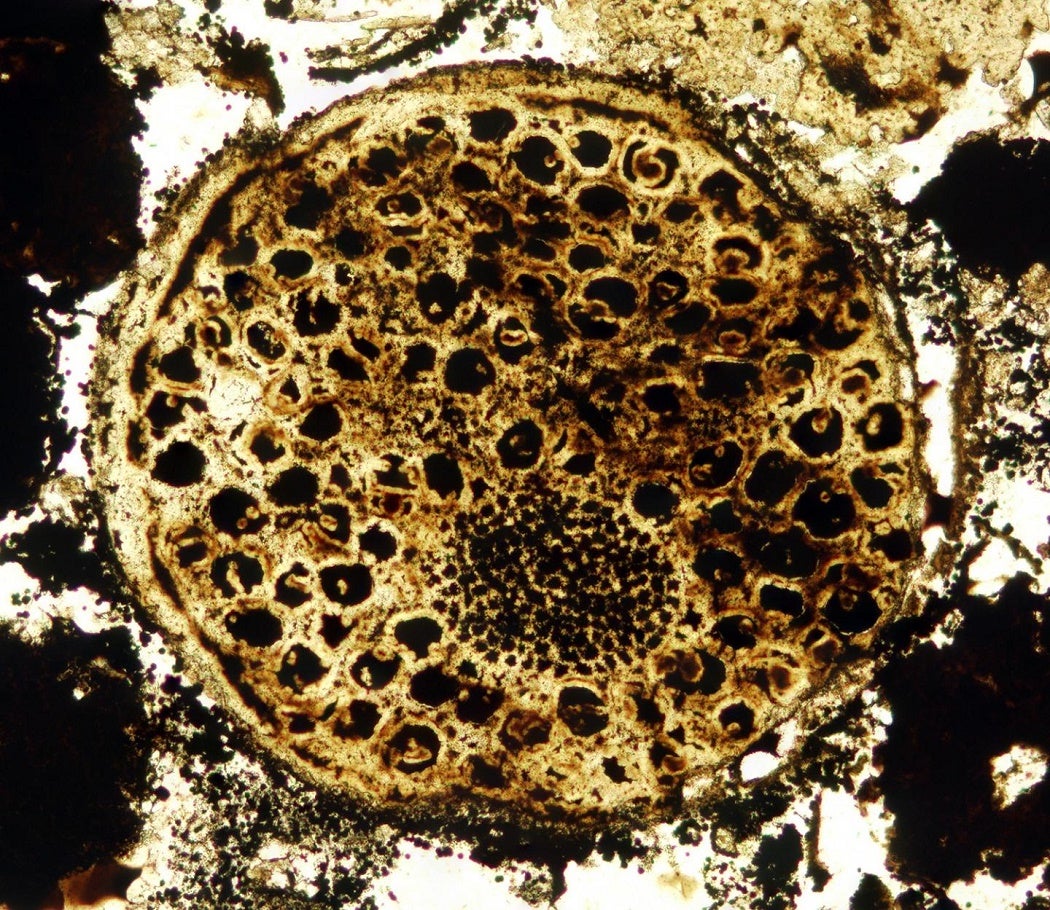When did animals first come into being? It might have been millions of years earlier than we thought. Recently, a team of scientists from the US and China examined fossilized Megasphaera cells that had been embedded in a previously overlooked type of phosphoric rock from a site in South China. After slicing the fossils into thin sections, they were able to photograph the cells using a digital camera attached to a microscope. In doing so, they captured images of cellular features and structures that were previously unseen in Megasphaera and that suggest the kinds of complex processes (e.g., cell differentiation and programmed cell death) that are carried out in the cells of modern-day animals.
What would already be an inherently neat achievement—photographing something never before seen—is even potentially more remarkable. These fossilized cells are dated to approximately 30-50 million years before animals begin to appear in the fossil record, and presumably began to appear on earth.
It’s not the first time that scientists have pondered over the seemingly anachronistic Megasphaera. In 2000, Xiao & Knoll published observations and scanning electron microscope images of similar Megasphaera fossils from the same South China site, but from a different kind of rock. They found the roughly sphere-shaped cells to be relatively large (about a half a millimeter in diameter) and fully encased in an envelope, sometimes in clusters of two or three. Cells of this size and structure are not usually seen in unicellular organisms, like bacteria, whether modern-day or fossilized.
To Xiao & Knoll, the single cells most closely resembled the eggs of modern-day sponges or cnidarians (e.g., jellyfish, sea anemones), with the cell clusters appearing to be embryos in the very early stages of growth. But, because no adult organism was visible in any of the fossils, they could not conclude what these embryos might become, so the mystery of Megasphaera continued.
Xiao & Knoll’s paper proved controversial, and in succeeding years, scientists developed alternative theories as to what kind of organism the Megasphaera might have been, ranging all the way from germinating protist to giant bacteria. However, this new evidence—that the cells may have performed complex processes—suggests they may have been on the right track.
While it might seem odd, or even petty, to participate in a decade-long debate about something that’s so tiny, and that lived so long ago, knowing whether Megasphaera was an animal, or a germinating protist, or even a giant bacteria, could also teach us more about the conditions that made our existence possible.







